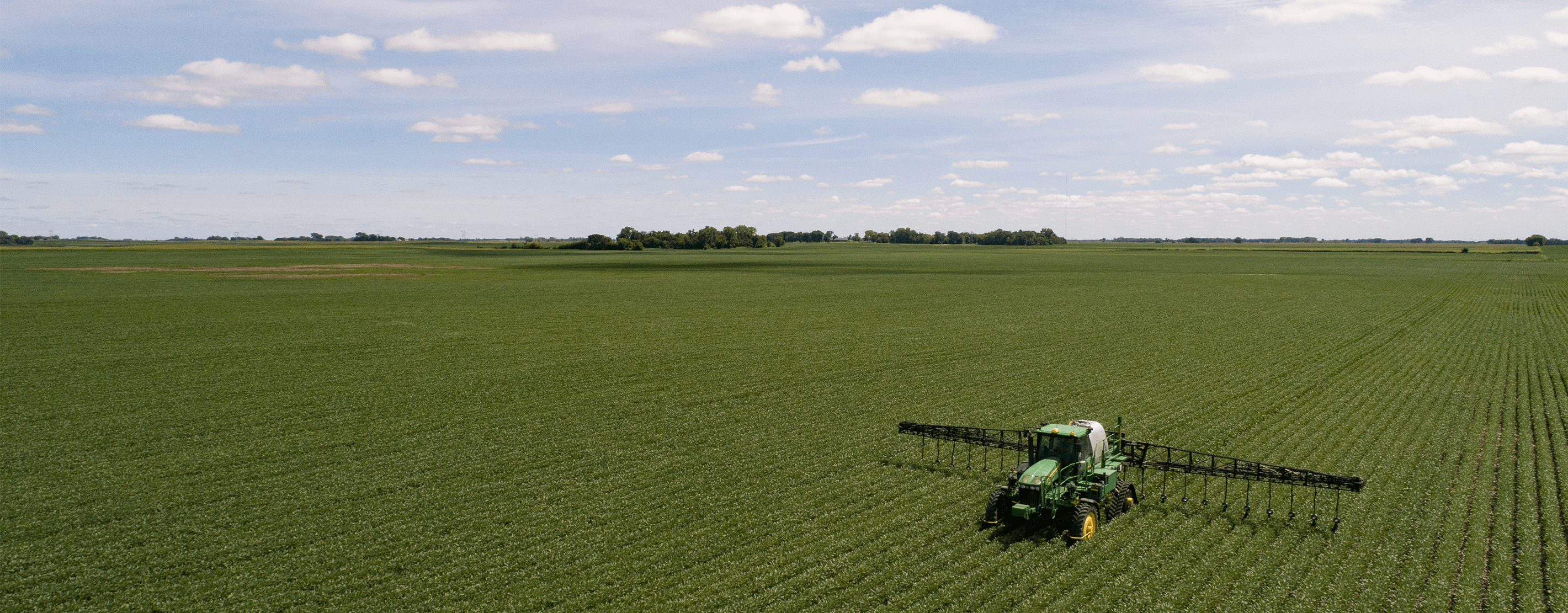
Creating a sustainable future with carbon markets
Let's talk about carbon markets and how they help address climate change
The voluntary carbon market is booming as companies, institutions and other organizations respond to consumer and investor climate interests. And it’s not without reason. Climate change is a threat to our quality of life, economic wellbeing and ability to feed a growing world population. Its physical effects—such as droughts, floods, wildfires and extreme heat—are happening across the globe.
This moment demands an all-hands-on deck effort to reduce levels of carbon dioxide and other greenhouse gases. Carbon markets can help us work towards this goal. But if you haven’t studied biology and physics since high school, you might be curious about what this entails. Land O’Lakes, Inc. is here to provide some background information about soil carbon markets and how they help address climate change.
Carbon
Carbon is an essential building block of life. It can bond with a large variety of elements to create different types of molecules. Thus, carbon is everywhere—in our atmosphere, living things and soils. But right now the carbon cycle is out of balance. An excess of carbon dioxide in the Earth’s atmosphere is trapping the sun’s heat and warming our planet. To help solve this problem, we need to reduce it, along with the excess emissions of other greenhouse gases that are contributing to global warming.
Truterra, LLC
Land O’Lakes believes the agriculture sector is uniquely positioned to be the best source of carbon removal services. We see great opportunities to boost farming economies by encouraging farmers to become more involved in climate stewardship—and help them potentially make a profit while doing so. That’s why Truterra, LLC—Land O’Lakes’ sustainability business—launched its inaugural carbon program in 2021. By the end of 2021, the program’s first signup sequestered more than 200,000 metric tons of carbon. In total, $4 million was paid in cash to farmers who participated, making it one of the largest carbon asset programs in the United States in its inaugural year.
How farmers capture carbon
Truterra uses a carbon sequestration “technology” that nature invented over three billion years ago called photosynthesis. Carbon is “food” for plants. When it’s absorbed by plants (with sunlight and water) it is transformed into organic matter so plants can grow and reproduce. Some of the absorbed carbon also makes its way into soil as plant litter and roots.
Enrolled farmers use regenerative farming practices that improve soil health to boost crop biomass production and minimize soil disturbance. In turn, this helps soils absorb more organic matter and over time transform it into soil carbon. Farmers are compensated for the additional quantity of soil carbon they have sequestered in their fields’ soils.
How carbon is measured
To provide the best value to farmers and assure buyers, Truterra places top priority on generating high-quality carbon credits. One of the ways to drive quality in the carbon market is to provide for rigorous measurement and quantification of soil carbon. Truterra partners with a number of collaborators to sample soil and run complex environmental models that estimate the changes in carbon levels. In addition, these measurement practices are reviewed and validated by an independent third-party expert who is experienced at evaluating carbon programs.
Soil modeling estimates how much soil carbon is present through a process that takes into account different on-farm factors such as soil type, crop rotation, soil tillage, and weather data. To sample soil, Truterra and its partners use a stratification process where they divide soil that needs to be sampled into zones that have differences such as soil types, vegetation cover or slope.
Soil carbon sequestration is relatively new to the nature-based carbon market. As such, the carbon market industry continues to work on improving how they estimate soil carbon changes and monitor the adoption and maintenance of beneficial farming practices. Truterra is working with experts in the industry and with certification bodies to ensure best practice methodologies. Truterra is grateful for our collaborators in these efforts, including early carbon market participants who are already making a difference with their purchases of carbon credits from our network of farmers.
Looking ahead
Interested in purchasing carbon removal credits generated by U.S. farmers? We have immediate opportunities for sustainability-minded companies to purchase these carbon offsets and support farmers while making progress toward sustainability goals. Truterra also has active projects available for ag supply shed interventions for food, fuel and fiber partners. For more details on these programs and to learn more about how we are supporting conservation agriculture reach out to truterra@landolakes.com.

Share